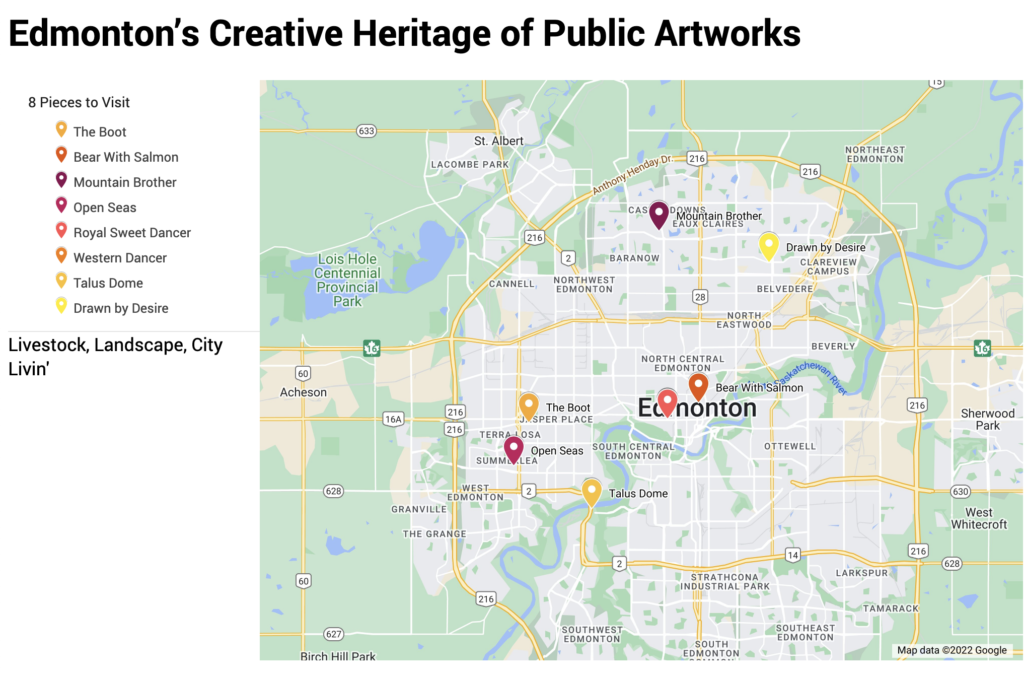
In the winter of 2022 the Space and Culture not for profit received a research and planning grant from the Edmonton Heritage Council to map and document sculptures, installations and other works of art in public locations in Edmonton. This project adds privately held works to extend Ariel MacDonald’s Master’s thesis “Getting ‘er Done: the Phantasmagoria of Public Art in Edmonton, Alberta” which included a large database of Edmonton’s civic collection of public art.
Studies of public art has noted that these sculptures and installations are often met with an initial burst of publicity (often skeptical concerning the cost, the artist chosen, or the perceived merit of the art itself), before the piece blends into the everyday life of the city. Most public artworks are constructed to remain in place for 20 years (often a requirement during the commissioning process); therefore these pieces become part of the urban fabric and yet, after their installation, little thought is often given to their role, what they say or reflect about the city, how they came to be where they are, or the artists intentions or process. Some become family favourites, but most public artworks become an overlooked part of the public realm. Despite this, civic public art collections are ubiquitous in OECD cities (due to the ubiquity of policies requiring 1 percent of large construction budgets be allocated to art). Public art is often understood as helping to make a city an attractive place to be.
Massive pieces by star artists garner media attention. Critics reflect on their meaning and place in the city, however this accounts for a very small amount of the public art, and happens in very few cities around the world (often the discourse is centred around cities like New York or London, or arts hubs like Bilbao and Kassel). Space and Culture inc.’s project aimed to engage with the art that exists in a midsize city that is not a cultural hub. This art merits attention, discussion of what it reflects about the city, its citizens, the urban form or where the artist was in their artistic development. These are the encounters that amalgamate people’s experience and sense of place of where they are; whether positive, negative or ambivalent. The academic literature notes public art’s propensity to fade into the landscape of cities – our project aims to enliven artworks by placing them in the context of the creative cultural heritage of the the city, as a way to talk about how the city has developed, and how it has been imagined using a public artworks as a lens through which to do so.
You can see the products of this project here.
-Ariel MacDonald, (Space and Culture Research Group Inc.)
